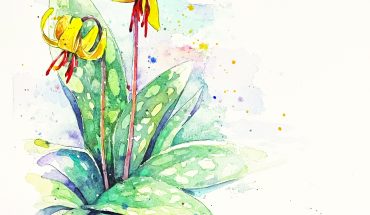 Writer and entomologist Eleanor Spicer Rice shares the secrets of seven surprising creatures that may be lurking inside your home
Writer and entomologist Eleanor Spicer Rice shares the secrets of seven surprising creatures that may be lurking inside your home
As summer turns into fall, insects and spiders are at their biggest. And since you’re inside more, too, that’s when you’re most likely to notice that you’re not alone while you watch TV. No surprise: Recent research at N.C. State found more than a hundred species of bugs in even the cleanest homes. But if you take a moment to get to know your constant companions, you may end up rolling out the welcome mat instead of rolling up your copy of this magazine to squash them. Meet some of your helpful, tiny roommates…
CELLAR SPIDERS are spiders for arachnophobes. They build cobwebby-looking homes in closets and basements, hanging upside-down with their gawky long legs spindling above them. But don’t be fooled by their gangly looks: Though they can’t bite humans, they’re vicious assassins. A cellar spider visits other spiders’ webs, shaking the silk as if he were a snagged moth. When the other spider comes to eat her supper, the cellar spider tosses a net over its prey, gobbles her up and happily takes over the web, eating insects caught by its victim’s own silken home.
COCKROACH HUNTING WASPS are so tiny, you’ve likely never noticed one floating, fairy-like, near the floors of your home. Many homes host these welcome warriors, and we’re lucky to have them. Also known as hatchet wasps, cockroach hunters search for the egg cases of our least desirable housemates: cockroaches. When the wasp finds a case, she jabs a tiny hole in it and lays her eggs. Her young swim around in roach eggs, feasting on our pests and emerge as a new fleet of winged troopers, ready to help rid our homes of roaches.
BEADED LACEWING LARVA are regal creatures as adults, flitting around light fixtures, but their young look and behave much differently. With no wings to lend them grace, the young beaded lacewing crawls around rotting wood, looking for its favorite meal: termites. When it finds them, it turns around and—there’s no other way to say this—breaks wind directly in the termites’ faces. The lacewing’s noxious gas causes the termites to pass out, leaving the lacewing with an all-you-can-eat termite buffet. One toot can knock out six termites at a time, more than enough for a hearty meal.
ODOROUS ANTS remain the most frequent visitor to drops of jam left on our kitchen counters. Of the 10 or so ant pests that can sneak into our homes, these are the most fun. For one, they do not bite or sting. For another, they smell exactly like blue cheese if you squish one. If you can get them to stick to your yard, where they belong, they’ll work wonders with pest control in your garden. (Just keep them away from aphids, which they protect and tend like cattle, milking them for a sweet liquid called honeydew and killing them for meaty snacks.)
BOOKLICE Most of us never see these minuscule creatures, but they are among our most common and prevalent housemates. Despite their name, these “lice” don’t suck blood—or even go near humans, if they can help it. Instead, they prefer to snack on any fungus or mold they can find… often in the deep recesses of our bookshelves.
SPITTING SPIDERS are rare scavengers among our home’s spider fauna. These lovely arachnids don’t bite humans, and they help keep our homes neat and clean by wandering around eating whatever dead insects they can find. If they can’t find anything dead to eat, they will hunt for our live household pests. Unlike most hunters, which rely on speed and strength to capture prey, spitting spiders hurl globs of venomous and sticky slobber at their suppers. Their prey gets bogged down, and the spitting spiders can eat them in peace.
CAMEL CRICKETS—also known as cave crickets, camel spiders and hippity-hops—leap unnervingly at their human hosts from dark corners in basements, sheds and crawlspaces. Startling us is their only defense; these crickets cannot bite or sting. They spend most of their time tiptoeing around the less-visited places of our homes, scavenging on dead plants and insects. Think of them as tidy, though creepy, housekeepers.



